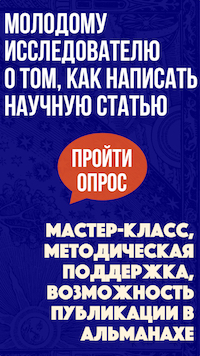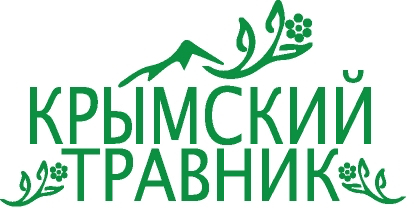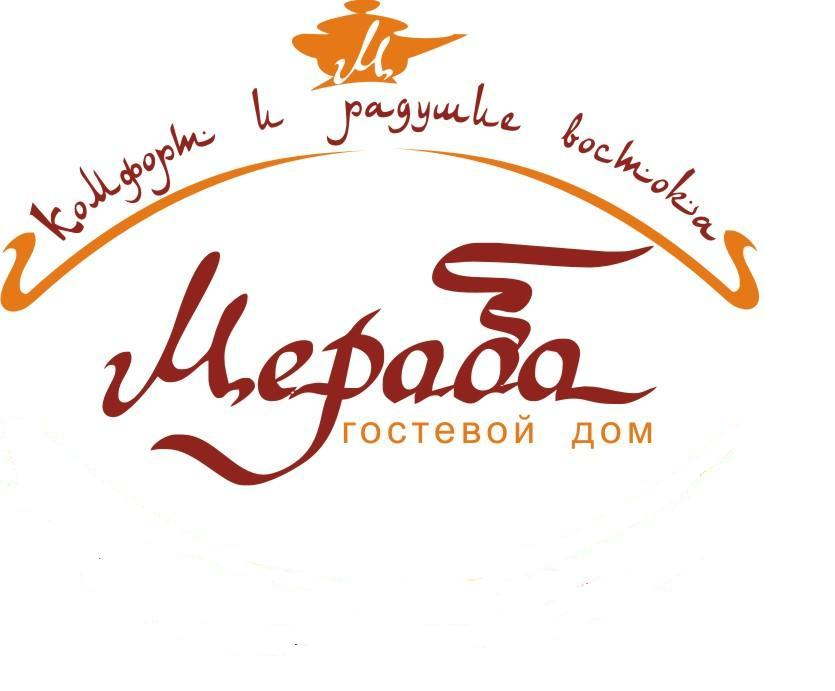МОЛОДЁЖНЫЙ ПРОЕКТ ДЛЯ ТЕХ, КТО ДЕЛАЕТ ПЕРВЫЕ ШАГИ В НАУКЕ
/components/bitrix/system.auth.form/auth_alm/images/login.gif) Войти
Войти /components/bitrix/system.auth.form/auth_alm/images/register.gif) Регистрация
Регистрация
Войти в корпоративную почту как автор/член редколлегии/рецензент журнала
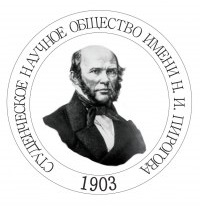


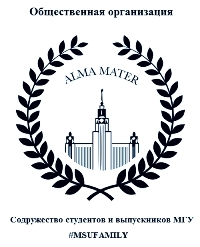
ПРОСТРАНСТВО ПРОСТРАНСТВ: КАСПИЙСКИЙ ДИАЛОГ / SPACE OF THE SPACES: CASPIAN DIALOGUE / RAUM DER RÄUME: KASPISCHEN DIALOGS
Комлева Н.А.
Иран: геополитический портрет
Комлева Наталья Александровна, доктор политических наук, профессор, директор Центра геополитического анализа, Екатеринбург
E-mail: natalia-a-komleva@j-spacetime.com; komleva1@yandex.ru
В статье рассматриваются основные характеристики Исламской Республики Иран как региональной сверхдержавы Среднего Востока. Утверждается, что геополитическое присутствие Ирана базируется на четырех основных факторах, называемых автором «иранским квадратом» — шиизме, арийстве, коммуникациях и энергетических ресурсах.
Ключевые слова: Иран; «иранский квадрат»; шиизм; арийство; коммуникации; энергетические ресурсы.
Цитирование по ГОСТ Р 7.0.11—2011:
Комлева, Н. А. Иран: геополитический портрет [Электронный ресурс] / Н.А. Комлева // Электронное научное издание Альманах Пространство и Время. — 2016. — Т. 13. — Вып. 1. — Стационарный сетевой адрес: 2227-9490e-aprovr_e-ast13-1.2016.42.
Komleva N.A.
Iran: Geopolitical Portrait
Natalia A. Komleva, D.Ph. (Political Sciences), Professor, Director of the Center for Geopolitical Analysis, Yekaterinburg
E-mail: natalia-a-komleva@j-spacetime.com; komleva1@yandex.ru
Nowadays, studying the main features of Islamic Republic of Iran as the Middle East regional superpower is of acute interest to comprehend real reasons of Iran’s geopolitical behavior. So, research subject of this article is Iranian specific way of geopolitical presence, which I examine using phenomenological and system analysis in the framework of historical and genetic approach.
I assume that the right base of Iran’s geopolitical activity is ‘Iranian square’, whose main components are the following: (i) Shia, (ii) Arianism, (iii) communications and (iv) energetic resources. In my article, I examine the manifestations of these four elements in the Caspian region: (i) Shia as a factor of ethno-religious and ethno-regional consolidation / separatism, (ii) Arianism as a direct attractive principle, on which the concept of Greater Iran rests and which is the basis of prohibiting external geopolitical (leadership) in the region, (iii) communications that makes Iran one of the most significant element of ensuring connectivity of the Eurasian space, (iv) energetic resources as a factor of both Iran's foreign economic attractiveness as a supplier of energy carriers and risks of foreign political pressure, external and internal conflictness and secession.
My conclusions are as follows:
(i) Iran as the Middle East regional superpower plays a significant role in economic, political and ideological processes not only in its own region, but also in Eurasia in general;
(ii) Such geopolitical portrait of Iran, which it formed by the first quarter of the 21st century, can be considered in terms of the ‘greater spaces’ as the resultant of centuries of folding the geopolitical landscape of not only the Greater Iran (or even more of Greater Caspian region), but the entire Greater Middle East and Eurasia in whole. The formation of each of the four components of the ‘Iranian square’ had its own features conditioned by the nature of internal and external political space and, accordingly, its own (‘characteristic’) time. One can assume that in the future, four elements of the ‘Iranian square’ while remaining closely interlinked (topologically, because geopolitical ‘square’, as well as other geopolitical ‘figures’ are precisely a sort of topology, but not the geometry), will both affect the appropriate landscape and influenced by it not always simultaneously. However, it is during peak periods of interconnection of these elements (which corresponds to the maximum coincidence of ‘own speed’ of deploying process of ideological and infrastructural components of the ‘square’), the role of Iran as a regional power of the Middle East is the most important in Eurasian scale;
(iii) In turn, Tehran's control over every element of its topos is, in fact, ‘renovation imperii’, restoration of the Empire, or rather, its own imperial political and geopolitical landscape that we can see over the past decades. Similar processes in two states of ‘imperial topos’ (and of relatively recent imperial historical past) neighboring with Iran, does not seem odd to us: those processes reflect, apparently, pan-Eurasian trend, in the format of which the stability and continuity (topology) of the Eurasian space will be determined by the topology of geopolitical triangle Russia — Iran — Turkey.
Keywords: Iran; ‘Iranian square’; Shia; Arianism; communications; energetic resources.
Cite MLA 7:
Komleva, N. A. "Iran: Geopolitical Portrait." Electronic Scientific Edition Almanac Space and Time 13.1 (2016). Web. <2227-9490e-aprovr_e-ast13-1.2016.42>. (In Russian).
Список литературы / References
Литература
Резолюция 2231 (2015), принятая Советом Безопасности на его 7488-м заседании 20 июля 2015 г. [Электронный ресурс] // Организация объединенных наций. Совет Безопасности. Резолюции Совета Безопасности. Режим доступа http://daccess-dds-ny.un.org/doc/UNDOC/GEN/N15/225/30/PDF/N1522530.pdf?OpenElement.
Азербайджан предложил Ирану воспользоваться нефтепроводом Баку — Тбилиси — Джейхан [Электронный ресурс] // Кавказ online. 2015. 5 авг. Режим доступа: http://kavkasia.net/Azerbaijan/2015/1438829282.php.
Албанви А. Мрачная картина закрытых мечетей в Азербайджане [Электронный ресурс] // ИСЛАМ.РУ. 2010. 15 нояб. Режим доступа: http://www.portal-credo.ru/site/?act=lib&id=2836.
Алексеев В. Новая сирийская стратегия Тегерана // Современный Иран. Информационно-аналитический журнал. 2015. № 44. С. 61—65.
Алексеев В. Персидский залив превращается во «внутреннее шиитское море» // Современный Иран. Информационно-аналитический журнал. 2014. № 28. С. 23—28.
Арунова М.П. Ирано-пакистанские отношения на современном этапе [Электронный ресурс] // Институт Ближнего Востока. 2008. 9 апр. Режим доступа: http://www.iimes.ru/?p=7029.
Астраханская область. Посол Индии в России Кришнан Рагхунатх и губернатор Анатолий Гужвин обсудили перспективы развития транспортного коридора «Север — Юг» [Электронный ресурс] // ИА REGNUM. 2002. 6 мая. Режим доступа: https://regnum.ru/news/polit/31675.html.
Бжезинский Зб. Великая шахматная доска. Господство Америки и его геостратегические императивы. М.: Междунар. отношения, 2010. 256 с.
Бжезинский Зб. Стратегический взгляд: Америка и глобальный кризис. М.: Астрель, 2012. 285 с.
В Ираке шииты и курды создают совместные структуры сопротивления [Электронный ресурс] // ИА REGNUM. 2015. 2 июля. Режим доступа: http://www.regnum.ru/news/polit/1939083.html.
Васильев А.М. Иран как шиитская сверхдержава: реальные и мнимые вызовы // Азия и Африка сегодня. 2012. № 8. С. 3—7.
Володин А. Иранский водный канал проект строительный или политический? [Электронный ресурс] // Военное обозрение. 2012. 13 авг. Режим доступа: http://topwar.ru/17657-iranskiy-vodnyy-kanal-proekt-stroitelnyy-ili-politicheskiy.html.
Вопрос создания ЗСТ между ЕАЭС и Ираном прояснится за год [Электронный ресурс] // Ритм Евразии. 2015. 23 сент. Режим доступа: http://www.ritmeurasia.org/news--2015-09-23--vopros-sozdanija-zst-mezhdu-eaes-i-iranom-projasnitsja-za-god-19716?.
Встреча главы и членов Совета экспертов шариата с великим лидером Исламской революции [Электронный ресурс] // Информационная база данных Центра защиты и распространения трудов Его светлости аятоллы Сейед Али Хаменеи. 2015. 4 сент. Режим доступа: http://russian.khamenei.ir/index.php?option=com_content&task=view&id=1198.
Газанлы К. Каспийская карта США и НАТО против России и Ирана [Электронный ресурс] // Военное обозрение. 2012. 9 июля. Режим доступа: http://topwar.ru/16196-kaspiyskaya-karta-ssha-i-nato-protiv-rossii-i-irana.html.
Газопровод Пакистан-Иран будет построен [Электронный ресурс] // Горная энциклопедия. Режим доступа http://news-mining.ru/news/gazoprovod_pakistan-iran_budet_postroen/.
Гасанов А. Подход Ирана к Каспийско-Черноморскому бассейну и безопасности Южного Кавказа, геостратегические интересы Азербайджана в области безопасности [Электронный ресурс] // Strategiya.az 2013. 15 июля. Режим доступа: http://strategiya.az/old/?m=xeber&id=19714.
Геологическая энциклопедия [Электронный ресурс]. Режим доступа: http://enc-dic.com/enc_geolog.
Глава МИД Ирана: мы не позволим Западу свергнуть Асада [Электронный ресурс] // NWESru.co.il: новости Израиля. 2012 г 16 дек. Режим доступа: http://www.newsru.co.il/mideast/16dec2012/iran8007.html.
Горбанев В., Митрофанова И. Природные ресурсы мировой экономики [Электронный ресурс] // Мировое и национальное хозяйство. Издание МГИМО(У) МИД России. 2014. № 2 (29). Режим доступа: http://www.mirec.ru/index.php?option=com_content&task=view&id=80.
Джавлах К. Почему Тегеран обсуждает с Пекином судьбу Ближнего Востока? [Электронный ресурс] // ИА REGNUM. 2015. 21 сент. Режим доступа: http://www.regnum.ru/news/international/1974719.html.
Закавказье: Турция слабеет, а Иран укрепляется [Электронный ресурс] // ИА REGNUM. 2015. 30 авг. Режим доступа: http://regnum.ru/news/polit/1959395.html?t=1440951067.
Зариф: Движение неприсоединения поддерживает суверенное равенство государств [Электронный ресурс] // Российское Информационное Агентство Iran.ru 2015. 2 окт. Режим доступа: http://www.iran.ru/news/politics/98696/Zarif_Dvizhenie_neprisoedineniya_podderzhivaet_suverennoe_ravenstvo_gosudarstv.
Зиннатуллин А. Шииты создают свое «Исламское государство» в Ираке [Электронный ресурс] // Islam Review. 2014. 22 окт. Режим доступа: http://islamreview.ru/politics/siity-sozdaut-svoe-islamskoe-gosudarstvo-v-irake/.
Зинькина Ю.В. Сирия и Иран: состояние и перспективы отношений в свете глобальной политики [Электронный ресурс] // Институт Ближнего Востока. 2007. 10 нояб. Режим доступа: http://www.iimes.ru/?p=6425.
Зульхарнеев А. Энергетические интересы Ирана в Каспийском регионе [Электронный ресурс] // ПИР-центр. 2010. Режим доступа: http://www.pircenter.org/media/content/files/11/13657545900.pdf.
Иракские шиитские партии сформируют крупнейшую парламентскую коалицию [Электронный ресурс] // РИА новости. 2010. 11 июня. Режим доступа: http://lite.ria.ru/world/20100611/245057894.html.
Иракские шииты требуют создания отдельного государства [Электронный ресурс] // Сегодня.ru 2005. 11 авг. Режим доступа: http://www.segodnia.ru/content/25452.
Иран в 2015 году хочет подписать договор с ЕАЭС [Электронный ресурс] // Газета.ru. 2015. 27 янв. Режим доступа: http://www.gazeta.ru/business/news/2015/01/27/n_6863557.shtml.
Иран вводит новый тип инвестиционных нефтяных контрактов [Электронный ресурс] // Вестник Кавказа. 2015. 22 сент. Режим доступа: http://www.vestikavkaza.ru/material/141287.
Иран ведет переговоры с ОАЭ об обмене электроэнергией. [Электронный ресурс] // Deyerler. Azerbaijan Islam News. 2015. 16 марта. Режим доступа: http://deyerler.org/ru/148515-rsrr-rirrrs-ryirsrrirrirss-s-rrr-rr-rrrrrr-srrryessrsrrsriryorr.html.
Иран захватил азербайджанское месторождение на Каспии [Электронный ресурс] // OILCAPITAL.RU. Издание ЗАО «Издательский Дом Нефть и Капитал». 2015. 9 нояб. Режим доступа: http://www.oilcapital.ru/konyunktura/277022.html.
Иран и шииты в Ираке [Электронный ресурс] // Институт Ближнего Востока. 2004. 19 апр. Режим доступа: http://www.iimes.ru/?p=3167.
Иран на Великом Шёлковом пути [Электронный ресурс] // Advantour Узбекистан. Режим доступа: http://www.advantour.com/rus/silkroad/iran.htm.
Иран начал активную переброску сил и техники в Сирию [Электронный ресурс] // Третья мировая война. Военно-политическое обозрение. 2015. 8 сент. Режим доступа: http://3mv.ru/publ/iran_nachal_aktivnuju_perebrosku_sil_i_tekhniki_v_siriju/1-1-0-47395.
Иран предлагает нефтегазовые проекты на Каспии [Электронный ресурс] // Кавполит. 2015. 8 нояб. Режим доступа: http://kavpolit.com/articles/iran_predlagaet_neftegazovye_proekty_na_kaspii-21225/.
Иран предоставляет скидки при транспортировке транзитных грузов из стран Центральной Азии [Электронный ресурс] // Review.uz бета-версия. 2015. 18 авг. Режим доступа: http://www.review.uz/index.php/novosti-main/item/4104-iran-predostavlyaet-skidki-pri-transportirovke-tranzitnykh-gruzov-iz-stran-tsentralnoj-azii.
Иран стал крупнейшим производителем электроэнергии на Среднем и Ближнем Востоке [Электронный ресурс] // Время Востока. 2014. 8 фев. Режим доступа: http://www.easttime.ru/news/iran/iran-stal-krupneishim-proizvoditelem-elektroenergii-na-srednem-i-blizhnem-vostoke/5975.
Иран усиливает свой каспийский флот [Электронный ресурс] // Azeritoday.Com. Новости Азербайджана. 2013. 11 июля. Режим доступа: http://azeritoday.com/archives/43665.
Иран. Экономика [Электронный ресурс] // Энциклопедия Кольера. Режим доступа: http://enc-dic.com/colier/Iran-jekonomika-3164/.
Иран: Ислам и власть / Рос. акад. наук. Ин-т востоковедения, Культур. представительство при Посольстве Ислам. Респ. Иран в Москве; отв. ред. Н.М. Мамедова и Мехди Санаи. М.: ИВ РАН, Крафт+, 2002. 277 с.
Ирану принадлежат самые протяженные на всем Ближнем и Среднем Востоке нефте- и газопроводы [Электронный ресурс] // Kazenergy. Энергия единства. 2013. 19 сент. Режим доступа: http://www.kazenergy.com/press/-1/10914-2013-09-19-04-18-00.html.
Исламизм в Латинской Америке [Электронный ресурс] // Политинформация. Аналитика, факты, комментарии. 2015. 4 янв. Режим доступа: http://politinform.su/geopolitika/13176-islamizm-v-latinskoy-amerike.html.
Исламский энциклопедический словарь [Электронный ресурс] Режим доступа: http://islamicencyclopedia.narod.ru/articles/128.html.
История санкций против Ирана [Электронный ресурс] // inoSMI.info 2015. 2 марта. Режим доступа http://inosmi.info/istoriya-vvedeniya-sanktsiy-protiv-irana.html.
Йемен: Иран продолжает поддерживать сепаратистов и мятежников [Электронный ресурс] // SMIonline. 2014. 31 марта. Режим доступа: http://so-l.ru/news/show/yemen_iran_prodolzhaet_podderzhivat_s_pr.
Как изменит мир Новый Шелковый путь? [Электронный ресурс] // Вести. Экономика. 2015. 25 мая. Режим доступа: http://www.vestifinance.ru/articles/57732.
Калиновский И. Иранская газовая альтернатива [Электронный ресурс] // Эксперт online. 2014. 25 сент. Режим доступа: http://expert.ru/2014/09/25/iranskaya-gazovaya-alternativa/.
Карабущенко П.Л. Элиты и этноконфликты в геополитическом пространстве «Великого Каспийского региона». // Каспийский регион: политика, экономика, культура. 2009. № 3 (20). С. 17—23.
Касеми: Месторождение «Сардар Джангал» принадлежит Ирану [Электронный ресурс] // Российское информационное агентство IRAN.ru. 2013. 9 янв. Режим доступа: http://www.iran.ru/news/economics/85038/Kasemi_Mestorozhdenie_Sardar_Dzhangal_prinadlezhit_Iranu
Каспий 2014: как разделить пирог? [Электронный ресурс] // Российский совет по международным делам. 2014. 30 апр. Режим доступа: http://russiancouncil.ru/inner/?id_4=3627#top-content.
Кого стоит опасаться Азербайджану? Корпус стражей исламской революции разместит свои подразделения на Каспии [Электронный ресурс] // Федеральная лезгинская национально-культурная автономия. 2013. 22 июля. Режим доступа: http://flnka.ru/digest-analytics/3258-kogo-stoit-opasatsya-azerbaydzhanu-korpus-strazhey-islamskoy-revolyucii-razmestit-svoi-podrazdeleniya-na-kaspii.html.
Комлева Н.А. Геополитический статус государства: сущность и типология // Геополитика и безопасность. 2010. № 1. С. 23—29.
Комлева Н.А. Сирийский кризис: нефтегазовые причины и следствия // Геополитика и безопасность. 2013. № 4. С. 52—62.
Компании из Европы выразили заинтересованность в нефтедобыче на Каспии [Электронный ресурс] // Российское информационное агентство IRAN.ru. 2016. 30 авг. Режим доступа: http://www.iran.ru/news/economics/102079/Kompanii_iz_Evropy_vyrazili_zainteresovannost_v_neftedobyche_na_Kaspii.
Конституция Исламской республики Иран [Электронный ресурс] // CIS.EMO. Международная мониторинговая организация. Режим доступа: http://www.cis-emo.net/sites/default/files/imagesimce/constitution_of_iran.pdf.
Косач Г. Шиитский клинок в сердце ваххабизма. Дискриминация религиозного меньшинства остается одной из главных политических проблем С-Аравии [Электронный ресурс] // ЦентрАзия. 2012. 21 нояб. Режим доступа: http://www.centrasia.ru/newsA.php?st=1353441900.
Кочетков А.В., Тынянова О.Н., Бекмагамбетов М.М. Каспийские транспортные альтернативы: некоторые аспекты формирования транспортного пространства [Электронный ресурс] // Электронное научное издание Альманах Пространство и Время. 2014. Т. 5. Вып. 1. Ч. 2: Пространство и время Каспийского Диалога. Стационарный сетевой адрес: 2227-9490e-aprovr_e-ast5-1-2.2014.61.
Крашенинникова В., Росс А. США в Стамбуле: «новый шёлковый шампур» для Ирана [Электронный ресурс] // ИНВИССИН. Институт внешнеполитических исследований и инициатив. 2011. 1 нояб. Режим доступа: http://www.invissin.ru/publications/usa_in_istanbul_new_silk_spit_for_iran_russia_china/.
Лебедева Е.В. Каспийский бассейн как источник геополитической конкуренции между США, Россией и Ираном // Вестник Нижегородского университета им. Н.И.Лобачевского. Серия: Международные отношения. Политология. Регионоведение. 2013. № 3 (1). С. 355—361.
Махтади А. Иран и Сирия: история, цели и будущее старых союзников [Электронный ресурс] // Око планеты. 2012. 28 апр. Режим доступа: http://oko-planet.su/politik/politiklist/114851-iran-i-siriya-istoriya-celi-i-buduschee-staryh-soyuznikov.html.
Мигунов Дм. Санкции против Ирана. Плюсы и минусы [Электронный ресурс] // Русский дом. 2012. 7 февр. Режим доступа http://russiahousenews.info/economics-news/sanktsiy-protiv-irana-plyusi-i-minusi.
МИД Азербайджана: Месторождение «Сардар Джангал» не имеет отношения к Ирану [Электронный ресурс] // Росбалт. 2013. 14 янв. Режим доступа: http://www.rosbalt.ru/world/2013/01/14/1081143.html.
Мирский Г. Шииты в современном мире [Электронный ресурс] // Русский архипелаг. Режим доступа: http://www.archipelag.ru/authors/mirsky/?library=2656.
Непомнящий А. Трехглавый ХАМАС на перепутье. Ждать ли нам войны на юге? [Электронный ресурс] // 9 канал ТВ. 2013. 9 авг. Режим доступа: http://9tv.co.il/news/2013/08/09/156068.html.
Нефтяная промышленность Ирана [Электронный ресурс] // ВЛАНТ. Консалтинговая компания. 2011. 18 янв. Режим доступа: http://www.vlant-consult.ru/information/board/131.
Оришев А.Б. Нацистская Германия в Иране: политико-идеологическая экспансия накануне Второй мировой войны [Электронный ресурс] // Научная онлайн-библиотека ПОРТАЛУС 2008. 13 мая Режим доступа: http://portalus.ru/modules/history/rus_show_archives.php?subaction=showfull&id=1210697616&archive=1447001994&start_from=&ucat.
Оришев А.Б. Политика нацистской Германии в Иране. СПб.: Юридический центр Пресс, 2005. 283 с.
Орликова А. Пылающий Йемен: Иран и Саудовская Аравия в борьбе за Аденский залив [Электронный ресурс] // ФАН. Федеральное агентство новостей. 2015. 28 марта. Режим доступа: http://riafan.ru/229982-pyilayushhiy-yemen-iran-i-saudovskaya-araviya-v-borbe-za-adenskiy-zaliv/.
Панкратенко И.Н. Иран-Пакистан: «Подводные камни» на пути партнерства [Электронный ресурс] // Центр стратегической конъюнктуры. 2015.а. 6 марта. Режим доступа: http://conjuncture.ru/iran-ru-06-03-2015/.
Панкратенко И.Н. Иранский газ и мифы о «конкуренции» с Россией [Электронный ресурс] // Центр стратегической конъюнктуры. 2015.б. 9 фев. Режим доступа: http://conjuncture.ru/iran-ru-09-02-2015/.
Панкратенко И.Н. Итоги Вены: значение и последствия соглашения по ядерной программе Ирана. М.: Центр стратегической конъюнктуры, 2015.в. С. 6—7.
Панкратенко И.Н. Сирийский Сталинград Тегерана // Современный Иран. Информационно-аналитический журнал. 2013. № 23. С. 51—57.
Персидская казачья Его Величества Шаха Персии дивизия [Электронный ресурс] // Иран. История государства. Режим доступа: http://statehistory.ru/5046/Persidskaya-kazachya-Ego-Velichestva-SHakha-Persii-diviziya/.
Призыв к бахрейнскому обществу «Аль-Вафак» отказаться от переговоров [Электронный ресурс] // ABNA.ir Информационное агентство Ахль-уль-Байт (А) — ABNA — Шиа-новости. 2011. 14 июля. Режим доступа: http://ru.abna24.com/253388/print.html.
Проценко А. Иран увеличит экспорт нефти [Электронный ресурс] // Российская газета. 2015. 24 сент. Режим доступа: http://www.rg.ru/2015/09/24/iran2-site-anons.html.
Ру Ж.-П. История Ирана и иранцев. От истоков до наших дней. М.: Евразия, 2012. 432 с. [Электронный ресурс] Режим доступа: http://www.eurasiabooks.ru/books-index/47-prodygy/234-2012-11-07-14-05-40.html?start=1.
Сажин В.И. Иран и Движение неприсоединения [Электронный ресурс] // Институт Ближнего Востока. 2006г. 3 октября. Режим доступа: http://www.iimes.ru/?p=4971.
Сайс Е. Щупальца «Хезболлы» в Латинской Америке» [Электронный ресурс] // inoСМИ.ru. 2013. 24 июля. Режим доступа: http://inosmi.ru/world/20130724/211248035.html.
Сатпаев Д. Как в Иране хранят наследие аятоллы Хомейни [Электронный ресурс] // Forbes. 2015. 12 июня. Режим доступа: http://forbes.kz//process/expertise/dosyim_satpaev_kak_v_irane_hranyat_nasledie_ayatollyi_homeyni/?utm_source=forbes&utm_medium=incut&utm_campaign=89183.
Саудовская Аравия пошла по пути Ирака, Сирии и Ливии? [Электронный ресурс] // Muslim politic 2015. 22 июня. Режим доступа: http://muslimpolitic.ru/2015/06/saudovskaya-araviya-poshla-po-puti-iraka-sirii-i-livii/.
Синельщиков А. Транспортная система Каспийского региона [Электронный ресурс] // Касфактор. Институт каспийского сотрудничества. 2011. 23 мая. Режим доступа: http://www.casfactor.com/ru/expanalit/318.html.
Сирия: истинные причины войны [Электронный ресурс] // Военная хроника. 2013. 31 дек. Режим доступа: http://voenhronika.ru/publ/sirija_vojna/sirija_istinnye_prichiny_vojny_gaz_neft_gazoprovody_rossija_analitika_2013_god/58-1-0-2613.
СМИ: Иран готовится к войне против Азербайджана [Электронный ресурс] //Real Armenia. Армения сегодня. 2015. 9 сент. Режим доступа: http://lratvakan.com/news/61314.html.
Сырьевой комплекс зарубежных стран. Иран [Электронный ресурс] // Информационно-аналитический центр «Минерал». Режим доступа: http://www.mineral.ru/facts/world/116/140/index.htm l.
Тарасов С. Иран укрепляет позиции на Каспии — Ирану угрожают расколом [Электронный ресурс] // ИА REGNUM. 2015. 10 нояб. Режим доступа: https://regnum.ru/news/polit/2008740.html.
Трофимов В. Иран и Большой Азербайджан: этническое рейдерство на фоне геополитического мародерства [Электронный ресурс] // WIN.ru: Сетевой интеллектуальный клуб. 2012. 9 февр. Режим доступа: http://win.ru/geopolitika/1328781467.
Туркменистан увеличит экспорт электроэнергии в Иран [Электронный ресурс] // Ансар. 2014. 24 окт. Режим доступа: http://www.ansar.ru/rfsng/turkmenistan-uvelichit-eksport-elektroenergii-v-iran.
Хезболла [Электронный ресурс] // Википедия, свободная энциклопедия. Режим доступа: https://ru.wikipedia.org/wiki/Хезболла.
Хуршудов А. Сложная нефть Ирана [Электронный ресурс] // Мировой кризис — хроника и комментарии. 2015. 3 авг. Режим доступа: http://worldcrisis.ru/crisis/wc_2012131.
Чернов М. Нашли друг друга. Евреи и мусульмане договорились о сотрудничестве в Европе [Электронный ресурс] // Lenta.ru. Мир. 2015. 20 сент. Режим доступа: http://lenta.ru/articles/2015/09/20/jewsinvienna/.
Члены «Ахль аль-Байт» и Союза исламских радио и телевидения встретились с лидером Исламской революции [Электронный ресурс] // Информационная база данных Центра защиты и распространения трудов Его светлости аятоллы Сейед Али Хаменеи. 2015. 17 авг. Режим доступа: http://russian.khamenei.ir/index.php?option=com_content&task=view&id=1193&Itemid=60.
Шах С. Китай построит газопровод из Ирана в Пакистан [Электронный ресурс] // Ведомости. 2015. 9 апр. Режим доступа: http://www.vedomosti.ru/business/articles/2015/04/09/kitai-postroit-gazoprovod-iz-irana-v-pakistan.
Шейх Садук (ас-Садук аль-Кумми, Мухаммад Абу Джафар ибн Али ибн аль-Хуссейн ибн Муса ибн Бабавайх). Достоинства шиитов / Перевод С. Рыжкова. Без выходных данных [Электронный ресурс] // Имамат. Режим доступа: http://www.imamat-books.ru/imamat/627-dostoinstva-shiitov.html.
Шиитский полумесяц [Электронный ресурс] // Мировая политика и ресурсы. 2015. 10 июня. Режим доступа: http://www.wprr.ru/archives/4087.
Шмулевич А. "Шиитский пояс" вокруг Израиля [Электронный ресурс] // АПН. Агентство политических новостей. 2005. 9 сент. Режим доступа: http://www.apn.ru/publications/article1552.htm.
Шушкевич Ю. Возможно, скоро мы не узнаем Ближний Восток [Электронный ресурс] // Центр стратегической конъюнктуры. 2012. 8 нояб. Режим доступа: http://conjuncture.ru/jews-and-arabs/.
Экономика Ирана [Электронный ресурс] // Википедия, свободная энциклопедия. Режим доступа: https://ru.wikipedia.org/wiki/Экономика_Ирана.
Bailey H.W. "Arya. An Ethnic Epithet in the Achaemenid Inscriptions and in the Zoroastrian Avestan Tradition." Encyclopædia Iranica. New York: Routledge & Kegan Paul, 1989, volume 2, pp. 681—683. Encyclopædia Iranica. Web. <http://www.iranicaonline.org/articles/arya-an-ethnic-epithet>.
Bush G.W. "President Delivers State of the Union Address." The White House. President George W. Bush. The White House, 29 Jan. 2002. Web. <http://georgewbush-whitehouse.archives.gov/news/releases/2002/01/20020129-11.html>.
"Dispatch: Bahrain Protests as a Proxy Battle." Stratfor. N.p., 17 Feb. 2011. Web. <https://www.stratfor.com/analysis/20110217-dispatch-bahrain-protests-proxy-battle>.
Escobar P. "New Great Game Revisited, Part 2. Iran, China and the New Silk Road." Asia Times Online. Asia Times Online (Holdings) Ltd., 26 June. 2009. Web. <http://www.atimes.com/atimes/China/KG26Ad02.html>.
Fakhreddin S. "Powerful Iraqi Shiite Cleric Sadr Quits Politics." The Daily Star. Lebanon. 16 Feb. 2014. Web. <http://www.dailystar.com.lb/News/Middle-East/2014/Feb-16/247484-powerful-iraqi-shiite-cleric-sadr-quits-politics-statement.ashx>.
Martel F. "La politique étrangère chinoise prend la route de la soie." StateFR. N.p., 29 Mar. 2015. Web. <http://www.slate.fr/story/99575/chine-route-de-la-soie>.
Rolland J.C., ed. Lebanon. Current Issues and Background. New York: Nova Science Publishers, 2003. Google Books. Google Inc., n.d. Web. <https://books.google.co.il/books?id=-JVOKeNkllgC&pg=PA13&hl=ru&source=gbs_toc_r&cad=3#v=onepage&q&f=false>.
Saiz E. "The Hezbollah’s Tentacles in Latin America." EL PAIS Internacional. 22 Jul. 2013. Web. <http://internacional.elpais.com/internacional/2013/07/22/actualidad/1374522187_534066.html>. (In Spanish).
"Selected Findings of National Population & Housing Census, 2011." Statistical Center of Iran. PDF-file. <http://www.amar.org.ir/Portals/1/Iran/90.pdf>.
Schmitt R. "Aryans." Encyclopædia Iranica. New York: Routledge & Kegan Paul, 1989, volume 2, pp. 684—687. Encyclopædia Iranica. Web. <http://www.iranicaonline.org/articles/aryans&gws_rd=cr&ei=nWJkWMuFKoagsAHzkY2YAg>.
Trautman T.R. Aryans and British India. New Delhi: JODA PRESS, 2004.
US Department of State. "State Sponsors of Terrorism." Official Website of US Department of State. US Department of State, n.d. Web. <http://www.state.gov/j/ct/list/c14151.htm>.
References:
"A Call to the Bahraini Society ‘al-Wapak’ to Abandon Negotiations." ABNA.ir. N.p., 14 Jul. 2011. Web. <http://ru.abna24.com/253388/print.html>. (In Russian).
Albanvi A. "Gloomy Picture of Closed Mocks in Azerbaijan." Islam.ru. N.p., 15 Nov. 2010. Web. <http://www.portal-credo.ru/site/?act=lib&id=2836>. (In Russian).
Alekseev V. "New Syrian Strategy of Tehran." Modern Iran 44 (2015): 61—65. (In Russian).
Alekseev V. "Persian Gulf Turns into Inner Shia Sea." Modern Iran 28 (2015): 23—28. (In Russian).
Arunova M.P. "Iran—Pakistan Relations at the Present Stage." Institute for the Middle East. Institute for the Middle East, 9 Apr, 2008. Web. <http://www.iimes.ru/?p=7029>. (In Russian).
"Astrakhan Region. India's Ambassador to Russia Krishnan Raghunath and Governor Anatoly Guzhvin Discussed Prospects of Development of North—South Transport Corridor." REGNUM News Agency. N.p., 6 May 2002. Web. <https://regnum.ru/news/polit/31675.html>. (In Russian).
"Azerbaijani Foreign Ministry: The Field ‘Sardar Jangal’ Has no Relation to Iran," Rosbalt News Agency. N.p., 14 Jan. 2013. Web. <http://www.rosbalt.ru/world/2013/01/14/1081143.html>. (In Russian).
"Azerbaijan Offers Iran to Use Baku — Tbilisi — Ceyhan Pipeline." Caucasus Online. N.p., 5 Aug. 2015. Web. <http://kavkasia.net/Azerbaijan/2015/1438829282.php>. (In Russian).
Bailey H.W. "Arya. An Ethnic Epithet in the Achaemenid Inscriptions and in the Zoroastrian Avestan Tradition." Encyclopædia Iranica. New York: Routledge & Kegan Paul, 1989, volume 2, pp. 681—683. Encyclopædia Iranica. Web. <http://www.iranicaonline.org/articles/arya-an-ethnic-epithet>.
Brzezinsky Z. The Grand Chessboard. American Primacy and Its Geostrategic Imperatives. Moscow: Mezhdunarodnyje otnoshenia Publisher, 2010. (In Russian).
Brzezinsky Z. Strategic Vision: America and the Crisis of Global Power. Moscow: AST Publisher, 2012. (In Russian).
Bush G.W. "President Delivers State of the Union Address." The White House. President George W. Bush. The White House, 29 Jan. 2002. Web. <http://georgewbush-whitehouse.archives.gov/news/releases/2002/01/20020129-11.html>.
"Caspian Sea 2014: How To Share the Pie?." Russian Council for International Affairs. Russian Council for International Affairs, 30 Apr. 2014. Web. <http://russiancouncil.ru/inner/?id_4=3627#top-content>. (In Russian).
Center for the Protection and Dissemination of His Serene Highness Ayatollah Seyed Ali Khamenei’s Works. "The Meeting of the Head and Members of the Council of Experts of the Shari'ah with the Great Leader of the Islamic Revolution." Information Database of the Centre for the Protection and Dissemination of His Serene Highness Ayatollah Seyed Ali Khamenei’s Works. Centre for the Protection and Dissemination of His Serene Highness Ayatollah Seyed Ali Khamenei’s Works, 4 Sep. 2015. Web. <http://russian.khamenei.ir/index.php?option=com_content&task=view&id=1198>. (In Russian).
Center for the Protection and Dissemination of His Serene Highness Ayatollah Seyed Ali Khamenei’s Works. "Members of the ‘Ahl-al-Bayt’ and the Union of Islamic Radio and Television Met with the Leader of the Islamic revolution.” Information Database of the Centre for the Protection and Dissemination of His Serene Highness Ayatollah Seyed Ali Khamenei’s Works. Center for the Protection and Dissemination of His Serene Highness Ayatollah Seyed Ali Khamenei’s Works, 17 Aug. 2015. Web. <http://russian.khamenei.ir/index.php?option=com_content&task=view&id=1193&Itemid=60>. (In Russian).
Chernov M. "Ones Found Each Other. Jews and Muslims Agreed about Cooperation in Europe." Lenta.ru. N.p., 20 Sep. 2015. Web. <http://lenta.ru/articles/2015/09/20/jewsinvienna/>. (In Russian).
"Dispatch: Bahrain Protests as a Proxy Battle." Stratfor. N.p., 17 Feb. 2011. Web. <https://www.stratfor.com/analysis/20110217-dispatch-bahrain-protests-proxy-battle>.
Dzhavlakh K. "Why Tehran Discusses the Fate of the Middle East with Beijing?." REGNUM News Agency. N.p., 21 Sep.2015. Web. <http://www.regnum.ru/news/international/1974719.html>. (In Russian).
Escobar P. "New Great Game Revisited, Part 2. Iran, China and the New Silk Road." Asia Times Online. Asia Times Online (Holdings) Ltd., 26 June. 2009. Web. <http://www.atimes.com/atimes/China/KG26Ad02.html>.
"European Companies Have Expressed Interest in Oil Production in the Caspian Sea." IRAN.ru Russian News Agency. N.p., 30 Aug. 2016. Web. <http://www.iran.ru/news/economics/102079/Kompanii_iz_Evropy_vyrazili_zainteresovannost_v_neftedobyche_na_Kaspii>. (In Russian).
Fakhreddin S. "Powerful Iraqi Shiite Cleric Sadr Quits Politics." The Daily Star. Lebanon. 16 Feb. 2014. Web. <http://www.dailystar.com.lb/News/Middle-East/2014/Feb-16/247484-powerful-iraqi-shiite-cleric-sadr-quits-politics-statement.ashx>.
"Gas Pipeline Iran — Pakistan Is To Build." Mining Encyclopedia. N.p., n.d. Web. <http://news-mining.ru/news/gazoprovod_pakistan-iran_budet_postroen/>. (In Russian).
Gasanly K. "USA and NATO Caspian Card vs Russia and Iran." Military Review. N.p., 9 Jul. 2012. Web. <http://topwar.ru/16196-kaspiyskaya-karta-ssha-i-nato-protiv-rossii-i-irana.html>. (In Russian).
Gassanov A. "Iran's Approach to the Caspian-Black Sea Basin and the South Caucasus Security, Geostrategic Interests of Azerbaijan in the Field of Security." Strategiya.az. N.p., 15 Jul. 2013. Web. <http://strategiya.az/old/?m=xeber&id=19714>. (In Russian).
Gorbanev V., Mitrofanova I. "Natural Resources of the World Economy." The Global and National Economy 2 (2014). Web. <http://www.mirec.ru/index.php?option=com_content&task=view&id=80>. (In Russian).
"Hezbollah." Wikipedia, the Free Encyclopedia. Wikimedia Commons, Inc., n.d. Web. <https://ru.wikipedia.org/wiki/Хезболла>. (In Russian).
"How the New Silk Road Will Change the World?." Vesti. Economics. All-Russia State Television and Radio Broadcasting Company, 25 May 2015. Web. <http://www.vestifinance.ru/articles/57732>. (In Russian).
"In Iraq, Shiites and Kurds Create Joint Structures of Resistance." REGNUM News Agency. N.p., 2 Jul. 2015. Web. <http://www.regnum.ru/news/polit/1939083.html>. (In Russian).
"Iran and Shiites in Iraq." The Middle East Institute. N.p., 19 Apr. 2004. Web. <http://www.iimes.ru/?p=3167>. (In Russian).
"Iran Begins the Active Transfer of Military Forces and Equipment in Syria." World War III. Military-Political Review. N.p., 8 Sep. 2015. Web. <http://3mv.ru/publ/iran_nachal_aktivnuju_perebrosku_sil_i_tekhniki_v_siriju/1-1-0-47395>. (In Russian).
"Iran Becomes the Largest Electricity Producer in the Middle East." Time of the East. 8 Feb. 2014. Web. <http://www.easttime.ru/news/iran/iran-stal-krupneishim-proizvoditelem-elektroenergii-na-srednem-i-blizhnem-vostoke/5975>. (In Russian).
"Iran. Economics." Collier’s Encyclopedia. N.p., n.d. Web. <http://enc-dic.com/colier/Iran-jekonomika-3164/>. (In Russian).
"Iran Has the Longest Oil and Gas Pipelines in the Whole Middle East." Kazenergy: Energy of the Unity. N.p., 19 Sep. 2013. Web. <http://www.kazenergy.com/press/-1/10914-2013-09-19-04-18-00.html>. (In Russian).
"Iran Introduces a New Type of Investment Oil Contracts." Herald of Caucasus. N.p., 22 Sep. 2015. Web. <http://www.vestikavkaza.ru/material/141287>. (In Russian).
"Iran Is in Talks with the UAE about the Exchange of Electric Power." Deyerler. Azerbaijan Islam News. N.p., 16 Mar. 2015. Web. <http://deyerler.org/ru/148515-rsrr-rirrrs-ryirsrrirrirss-s-rrr-rr-rrrrrr-srrryessrsrrsriryorr.html>. (In Russian).
"Iran Offers Discounts During for Transit Goods Transportation from Central Asian Countries." Review.uz. Beta Versia. Web. 18 Aug. 2015. Web. <http://www.review.uz/index.php/novosti-main/item/4104-iran-predostavlyaet-skidki-pri-transportirovke-tranzitnykh-gruzov-iz-stran-tsentralnoj-azii>. (In Russian).
"Iran Offers Oil and Gas Projects in the Caspian Sea." Kavpolit. N.p., 8 Nov 2015. Web <http://kavpolit.com/articles/iran_predlagaet_neftegazovye_proekty_na_kaspii-21225/>. (In Russian).
"Iran on the Silk Road." Advantour Uzbekistan. N.p., n.d. Web. <http://www.advantour.com/rus/silkroad/iran.htm>. (In Russian).
"Iran Seized the Azeri field in the Caspian Sea." OILCAPITAL.RU. Publishing House ‘Oil and Capital,’ 9 Nov. 2015. Web. <http://www.oilcapital.ru /konyunktura/277022.html>. (In Russian).
"Iran Strengthens Its Caspian Fleet." Azeritoday.com: Azerbaijan News. N.p., 11 Jul. 2013. Web. <http://azeritoday.com/archives/43665>. (In Russian).
"Iran Wants to Sign Contract with EEU in 2015." Gazeta.ru. N.p., 27 Jan. 2015. Web. <http://www.gazeta.ru/business/news/2015/01/27/n_6863557.shtml> (In Russian).
"Iraqi Shias Demand a Separate State." Segodnia.ru. N.p., 11 Aug. 2005. Web. <www.segodnia.ru/content/25452>. (In Russian).
"Iraqi Shiite Parties Will Create the Largest Parliamentary Coalition." Novosti Russian News Agensy. Russian Today International News Agency, 11 Jul. 2010. Web. <http://lite.ria.ru/world/20100611/245057894.html>. (In Russian).
Islamic Encyclopedia. N.p., n.d. Web. <http://islamicencyclopedia.narod.ru/articles/128.html>. (In Russian).
"Islamism in Latin America." Politinformation. Analytics, Facts, Comments. N.p., 4 Jan. 2015. Web. <http://politinform.su/geopolitika/13176-islamizm-v-latinskoy-amerike.html>. (In Russian).
Kalinovsky I. "Iran Gas Alternative." Expert Online. Expert Group, 25 Sep. 2014. Web. <http://expert.ru/2014/09/25/iranskaya-gazovaya-alternativa/>. (In Russian).
Karabushchenko P.L. "The Elites and the Ethnic Conflicts in the Geopolitical Space of the ‘Greater Caspian Region’." Caspian Region: Politics, Economics, Culture 3 (2009): 17—23. (In Russian).
Khurshudov A. "Complicated Oil of Iran." The World Crisis: Timeline and Comments. Mikhail Khazin & Andrey Akopyants, 3 Aug. 2015. Web. <http://worldcrisis.ru/crisis/wc_2012131>. (In Russian).
Kochetkov A.V., Tynyanova O.N., Bekmagambetov M.M. "Caspian Transport Alternatives: Some Aspects of the Transport Space Formation." Electronic Scientific Edition Almanac Space and Time 5.1(2: 'The Space and Time of The Caspian Dialogue’) (2014). Web. <2227-9490e-aprovr_e-ast5-1-2.2014.61>. (In Russian).
Komleva N.A. "Geopolitical Status of a State: Essence and Typology." Geopolitics and Security 1 (2010): 23—29. (In Russian).
Komleva N.A. "The Syrian Crisis: Oil and Gas Causes and Consequences." Geopolitics and Security 4 (2013): 52—62. (In Russian).
Kosach G. "Shia Dagger to the Heart of Wahhabis. Discrimination against Religious Minorities Remains One of the Main Political Problems of Saudi Arabia." CentrAsia. N.p., 21 Nov. 2012. Web. <http://www.centrasia.ru/newsA.php?st=1353441900>. (In Russian).
Krasheninnikova V., Ross A. "USA in Istanbul: ‘New Silk Skewer’ for Iran." Institute for Studies in Foreign Policy and Initiatives. Institute for Studies in Foreign Policy and Initiatives, 1 Nov. 2011. Web. 24 Sept. 2015. <http://www.invissin.ru/publications/usa_in_istanbul_new_silk_spit_for_iran_russia_china/> (In Russian).
Lebedeva E.V. "The Caspian Basin as a Source of Geopolitical Competition between the US, Russia and Iran." Bulletin of the N.I. Lobachevsky Nizhny Novgorod University. Series International Relations, Political & Regional Studies 3 (2013): 355—361. (In Russian).
Makhtadi A. "Iran and Syria: The History, Purposes and Future of Old Allies." Eye of the Planet. N.p., 28 Apr. 2012. Web. <http://oko-planet.su/politik/politiklist/114851-iran-i-siriya-istoriya-celi-i-buduschee-staryh-soyuznikov.html>. (In Russian).
Mamedova M., Sanai M., eds. Iran: Islam and Power. Moscow: RAS Institute of Oriental Studies Publisher, Kraft+ Publisher, 2002. (In Russian).
Martel F. "La politique étrangère chinoise prend la route de la soie." StateFR. N.p., 29 Mar. 2015. Web. <http://www.slate.fr/story/99575/chine-route-de-la-soie>.
"Media: Iran Is Preparing for War against Azerbaijan." Real Armenia. Armenia Today. N.p., 9 Sep. 2015. Web. <http://lratvakan.com/news/61314.html>. (In Russian).
Migunov D. "The Sanctions against Iran. Pluses and Minuses." Russian House. N.p., 7 Feb. 2012. Web. <http://russiahousenews.info/economics-news/sanktsiy-protiv-irana-plyusi-i-minusi>. (In Russian).
Mining Encyclopedia. N.p., n.d. Web. <http://enc-dic.com/enc_geolog/>. (In Russian).
Mirsky G. "Shiites in the Modern World." Russian Archipelago. N.p., n.d. Web. <http://www.archipelag.ru/authors/mirsky/?library=2656>. (In Russian).
Nepomnyashchy A. "Three-headed Hamas at a Crossroad. Should We Wait for the War in the South?." TV 9th Chanel. N.p., 9 Aug, 2013. Web. <http://9tv.co.il/news/2013/08/09/156068.html>. (In Russian).
"Oil Industry of Iran." VLANT Consulting Company. VLANT Consulting Company, 18 Jan. 2011. Web. <http://www.vlant-consult.ru/information/board/131>. (In Russian).
Orishev A.B. "Nazi Germany in Iran: Political and Ideological Expansion before World War II." Portalus.ru. N.p., 13 May 2008. Web. <http://portalus.ru/modules/history/rus_show_archives.php?subaction=showfull&id=1210697616&archive=1447001994&start_from=&ucat>. (In Russian).
Orishev A.B. Nazi Germany's Policy in Iran. St. Petersburg: Legal Center Press Publisher, 2005. 283 p. (In Russian).
Orlikova A. "Flaming Yemen: Iran and Saudi Arabia in the Fight for the Gulf of Aden." Federal News Agency. Web. 09 Sept. 2015. <http://riafan.ru/229982-pyilayushhiy-yemen-iran-i-saudovskaya-araviya-v-borbe-za-adenskiy-zaliv/> (In Russian).
Pankratenko I.N. "Iran — Pakistan: Pitfalls on the Path of the Partnership." Center for Strategic Conjuncture. N.p., 6 Mar. 2015. Web. <http://conjuncture.ru/iran-ru-06-03-2015/>. (In Russian).
Pankratenko I.N. "Iranian Gas and Myths about ‘Competition’ with Russia." Center for Strategic Conjuncture. N.p., 9 Feb. 2015. Web. <http://conjuncture.ru/iran-ru-09-02-2015/>. (In Russian).
Pankratenko I.N. "Syrian Stalingrad of Tehran." Modern Iran 23 (2013): 51—57. (In Russian).
Pankratenko I.N. The Results of Vienna: Meaning and Consequences of the Iran's Nuclear Program Agreement. Moscow: Center for Strategic Conjuncture Publisher, 2015, pp. 6—7. (In Russian).
"Persian Cossack Division of His Majesty Shah of Persia." Iran. The History of the State. N.p., n.d. Web. <http://statehistory.ru/5046/Persidskaya-kazachya-Ego-Velichestva-SHakha-Persii-diviziya/>. (In Russian).
Prozenko A. "Iran Will Increase Oil Exports." Russian Gazette [Moscow] 28 Sep. 2015. (In Russian).
"Qassemi: The Field "Sardar Jangal" Belongs to Iran." IRAN.ru Russian News Agency. N.p., 9 Jan. 2013. Web. <http://www.iran.ru/news/economics/85038/Kasemi_Mestorozhdenie_Sardar_Dzhangal_prinadlezhit_Iranu>. (In Russian).
"Resources Complex of Foreign Countries. Iran." Information and Analytical Center ‘Mineral.’ Information and Analytical Center ‘Mineral,’ n.d. Web. <http://www.mineral.ru/facts/world/116/140/index.htm l>. (In Russian).
Rolland J.C., ed. Lebanon. Current Issues and Background. New York: Nova Science Publishers, 2003. Google Books. Google Inc., n.d. Web. <https://books.google.co.il/books?id=-JVOKeNkllgC&pg=PA13&hl=ru&source=gbs_toc_r&cad=3#v=onepage&q&f=false>.
Roux J.-P. The History of Iran and Iranians. From Origins to the Present Day. St. Petersburg: Evraziya Publisher, 2012. 432 p. (In Russian).
Saiz E. "The Hezbollah’s Tentacles in Latin America." inoSMIru. N.p., 24 Jul. 2013. Web. <http://inosmi.ru/world/20130724/211248035.html>. (In Russian).
Saiz E. "The Hezbollah’s Tentacles in Latin America." EL PAIS Internacional. 22 Jul. 2013. Web. <http://internacional.elpais.com/internacional/2013/07/22/actualidad/1374522187_534066.html>. (In Spanish).
Satpayev D. "How They Keep the Heritage of Ayatollah Khomeini in Iran." Forbes. United Media Group & Forbes.com LLC™, 12 Jun. 2015. Web. <http://forbes.kz//process/expertise/dosyim_satpaev_kak_v_irane_hranyat_nasledie_ayatollyi_homeyni/?utm_source=forbes&utm_medium=incut&utm_campaign=89183>. (In Russian).
"Saudi Arabia Went the Way of Iraq, Syria and Libya." Muslim Politic. N.p., 22 Jun. 2015. Web. <http://muslimpolitic.ru/2015/06/saudovskaya-araviya-poshla-po-puti-iraka-sirii-i-livii/>. (In Russian).
Sazhin V.I. "Iran and the Non-aligned Movement." Institute for Middle East. Institute for Middle East, 3 Oct. 2006. Web. <http://www.iimes.ru/?p=4971>. (In Russian).
Schmitt R. "Aryans." Encyclopædia Iranica. New York: Routledge & Kegan Paul, 1989, volume 2, pp. 684—687. Encyclopædia Iranica. Web. <http://www.iranicaonline.org/articles/aryans&gws_rd=cr&ei=nWJkWMuFKoagsAHzkY2YAg>.
"Selected Findings of National Population & Housing Census, 2011." Statistical Center of Iran. PDF-file. <http://www.amar.org.ir/Portals/1/Iran/90.pdf>.
Shakh S. "China Will Build a Gas Pipeline from Iran to Pakistan." Vedomosti [The Record]. JSC Business News Media, 9 Apr. 2015. Web. <http://www.vedomosti.ru/business/articles/2015/04/09/kitai-postroit-gazoprovod-iz-irana-v-pakistan> (In Russian).
Sheik Saduq (as-Saduq al-Qummi, Muhammad Abu ja'far Ibn Ali Ibn al-Hussein Ibn Musa Ibn Babawayh). "The Dignities of the Shiites." Imamate. N.p., n.d. Web. <http://www.imamat-books.ru/imamat/627-dostoinstva-shiitov.html>. (In Russian).
Shmulevich A. "‘Shiite Belt’ around Israel." APN: Political News Agency. N.p., 9 Sep. 2005. Web. <http://www.apn.ru/publications/article1552.htm>. (In Russian).
Shushkevich Yu. "Maybe We Soon Won't Recognize the Middle East." Center for Strategic Conjuncture. Center for Strategic Conjuncture, 8 Nov. 2012. Web. <http://conjuncture.ru/jews-and-arabs/>. (In Russian).
Simelshchikov A. "The Transport System of the Caspian Region." Kasfaktor. Institute for Caspian Cooperation. Institute for Caspian Cooperation, 23 May 2011. Web. 29 Jul. 2015. <http://www.casfactor.com/ru/expanalit/318.html> (In Russian).
"Syria: The True Causes of the War." Military Chronicle. N.p., 31 Dec. 2013. Web. <http://voenhronika.ru/publ/sirija_vojna/sirija_istinnye_prichiny_vojny_gaz_neft_gazoprovody_rossija_analitika_2013_god/58-1-0-2613>. (In Russian).
Tarasov S. "Iran Strengthens Its Position in the Caspian Sea — Iran Is at Risk of Secession." REGNUM News Agency. N.p., 10 Nov. 2015. Web. <https://regnum.ru/news/polit/2008740.html>. (In Russian).
"The Constitution of the Islamic Republic of Iran." CIS.EMO. The International Monitoring Organization. N.p., n.d. PDF-file. <http://www.cis-emo.net/sites/default/files/imagesimce/constitution_of_iran.pdf>. (In Russian).
"The Economy of Iran." Wikipedia, the Free Encyclopedia. Wikimedia Commons, Inc., n.d. Web. <https://ru.wikipedia.org/wiki/Экономика_Ирана>. (In Russian).
"The History of Sanctions against Iran." inoSMI.info. N.p., 2 Mar. 2015 Web. <http://inosmi.info/istoriya-vvedeniya-sanktsiy-protiv-irana.html>. (In Russian).
"The Iranian Foreign Minister: We Will Not Allow West To Overthrow Assad." NWESru.co.il: News of Israel. N.p., 16 Dec. 2012. Web. <http://www.newsru.co.il/mideast/16dec2012/iran8007.html>. (In Russian).
"The Problem of Free-Trade Area between the EEU and Iran Will Become Clearer During the Year." Rhythm of Eurasia. N.p., 23 Sep. 2015. Web. <http://www.ritmeurasia.org/news--2015-09-23--vopros-sozdanija-zst-mezhdu-eaes-i-iranom-projasnitsja-za-god-19716>. (In Russian).
"The Shiite Crescent." World Policy and Resources Researсh. N.p., 10 Jun. 2015. Web. <http://www.wprr.ru/archives/4087>. (In Russian).
"Transcaucasia: Turkey Gets Weaker and Iran Stronger." REGNUM News Agency. N.p., 30 Aug. 2015. Web. <http://regnum.ru/news/polit/1959395.html?t=1440951067>. (In Russian).
Trautman T.R. Aryans and British India. New Delhi: JODA PRESS, 2004.
Trofimov V. "Great Iran and Azerbaijan: Ethnic Raiding on the Background of Geopolitical Looting." WIN.ru: Network Intellectual Club. N.p., 9 Feb. 2012. Web. <http://win.ru/geopolitika/1328781467>. (In Russian).
"Turkmenistan Will Increase Electricity Exports to Iran." Ansar: Information-Analytical Channel. N.p., 24 Oct. 2014. Web. <http://www.ansar.ru/rfsng/turkmenistan-uvelichit-eksport-elektroenergii-v-iran>. (In Russian).
UN Security Council. "Resolution no. 2231 (2015) Adopted by the Security Council at Its 7488th Meeting 20 July 2015." The United Nations. The Security Council. Resolutions of the Security Council. PDF-file. <http://daccess-dds-ny.un.org/doc/UNDOC/GEN/N15/225/30/PDF/N1522530.pdf?OpenElement>. (In Russian).
US Department of State. "State Sponsors of Terrorism." Official Website of US Department of State. US Department of State, n.d. Web. <http://www.state.gov/j/ct/list/c14151.htm>.
Vasiliev A. "Iran as Shia Superpower." Asia and Africa Today 8 (2012): 3—7. (In Russian).
Volodin A. "Iranian Water Channel: Is the Project Constructional or Political?." Military Review. N.p., 13 Aug, 2012. Web. <http://topwar.ru/17657-iranskiy-vodnyy-kanal-proekt-stroitelnyy-ili-politicheskiy.html>. (In Russian).
"Whom Azerbaijan Should Be Afraid Of? The Islamic Revolutionary Guard Corps Will Place Their Units in the Caspian Sea." Official Website of Federal Lezgin National-Cultural Autonomy. Federal Lezgin National-Cultural Autonomy, 22 Jul. 2013. Web. <http://flnka.ru/digest-analytics/3258-kogo-stoit-opasatsya-azerbaydzhanu-korpus-strazhey-islamskoy-revolyucii-razmestit-svoi-podrazdeleniya-na-kaspii.html>. (In Russian).
"Yemen: Iran Continues to Support Separatists and Insurgents." SMIonline. N.p., 31 Mar. 2014. Web. <http://so-l.ru/news/show/yemen_iran_prodolzhaet_podderzhivat_s_pr>. (In Russian).
"Zarif: The Non-aligned Movement Supports Sovereign Equality of States." Iran.ru Russian News Agency. N.p., 2 Oct.2015. Web. <http://www.iran.ru/news/politics/98696/Zarif_Dvizhenie_neprisoedineniya_podderzhivaet_suverennoe_ravenstvo_gosudarstv>. (In Russian).
Zinkina Yu.V."Syria and Iran: State and Prospects of Relations in the Light of Global Politics." Institute for Middle East. Institute for Middle East, 10 Nov. 2007. Web. <http://www.iimes.ru/?p=6425>. (In Russian).
Zinnatullin A. "Shiites Create Their ‘Islamic State’ in Iraq." Islam Review. N.p., 22 Oct. 2014. Web. <http://islamreview.ru/politics/siity-sozdaut-svoe-islamskoe-gosudarstvo-v-irake/>. (In Russian).
Zulkharneev A. "Energy Interests of Iran in the Caspian Region." PIR-Center. N.p., 2010. PDF-file, <http://www.pircenter.org/media/content/files/11/13657545900.pdf>. (In Russian).
Читать статью / Read more




